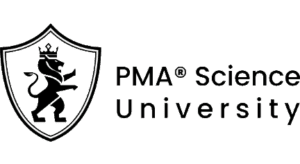There are 4 modules in this course
Welcome to our next course in the School Health specialization: Managing ADHD, Autism, Learning Disabilities, and Concussion in School. In this course, you will about the most common developmental and behavioral disorders affecting children such as ADHD, autism spectrum disorder, learning disorders, and concussions. We will focus on how schools can support children by recognizing common symptoms and understanding the diagnosis process.
You’ll be introduced to scenarios that provide firsthand clinician experience working with children with ADHD. We will walk through management options for the most common developmental and behavioral disorders. Next, we’ll go through two interview modules that discuss autism and learning disorders. Finally, we’ll discuss what concussions are, symptoms, and management
Prepare yourself to learn about the most common development and behavioral disorders affecting children.
Skills you’ll gain
- Special Education
- Psychological Evaluations
- Disabilities
- Individualized Education Programs (IEP)
- School Psychology
- Classroom Management
- Care Management
- Mental Health
- Child Development
Build your subject-matter expertise
This course is part of the School Health for Children and Adolescents Specialization
When you enroll in this course, you’ll also be enrolled in this Specialization.
- Learn new concepts from industry experts
- Gain a foundational understanding of a subject or tool
- Develop job-relevant skills with hands-on projects
- Earn a shareable career certificate
Curriculum
- 4 Sections
- 30 Lessons
- 9 Weeks
- Module 1
Attention Deficit Hyperactivity Disorder (ADHD)
In the next few lessons, you will learn broadly about Attention-Deficit/Hyperactivity Disorder, commonly referred to as ADHD. We will gain a deeper understanding of ADHD and common diagnoses. You will be introduced to the types of ADHD that exist and common symptoms for each. Next, you’ll explore the specific criteria for the diagnosis of ADHD. Finally, you will review high-level treatment therapy and intervention programs – both inside and outside school – as well as medications.
Learning Objectives
- Describe Attention-Deficit/Hyperactivity Disorder
- Describe common symptoms a child may experience
- Explain your role in the ADHD evaluation process
12- 1.1Managing ADHD, Autism, Learning Disabilities, and Concussion in School1 Minute
- 1.2About Us: School Health for Children and Adolescents Specialization at CU Anschutz10 Minutes
- 1.3Get help and meet other learners in this course. Join your discussion forums!5 Minutes
- 1.4What is ADHD (Video)4 Minutes
- 1.5What is ADHD? (Reading)20 Minutes
- 1.6Symptoms of ADHD (Video)3 Minutes
- 1.7Symptoms of ADHD (Reading)20 Minutes
- 1.8Diagnosing ADHD (Video)5 Minutes
- 1.9Diagnosing ADHD (Reading)
- 1.10Management of ADHD (Video)4 Minutes
- 1.11Management of ADHD (Reading)15 Minutes
- 1.12ADHD Assessment10 Questions
- Module 2
Autism Spectrum Disorder
Next up is learning about Autism Spectrum Disorder, the effects it has on children’s social communication skills, and the percentage of the population that carry a diagnosis of it.
You’ll experience an interview and answer dialogue with Dr. Abigail Angulo, a Developmental-Behavioral Pediatrician at the University of Colorado. You will be introduced to the deficits in children with Autism Spectrum Disorder (ASD). Next, you’ll explore symptoms and diagnosis of ASD. Finally, you’ll review the cause and management of autism.
Learning Objectives
- Identify the difference between Autism Spectrum Disorder and Asperger Syndrome
- Recognize restricted interests and repetitive behaviors of a child
- Recognize what an Autism Spectrum Disorder evaluation would look like
- Describe what supporting the child typically focuses on
7- 2.1What is Autism Spectrum Disorder ASD (Video)4 Minutes
- 2.2What is Autism Spectrum Disorder (ASD)? (Reading)30 Minutes
- 2.3Deficits in Children with ASD6 Minutes
- 2.4Symptoms and Diagnosis of ASD6 Minutes
- 2.5Managing Children with ASD (Video)1 Minute
- 2.6Managing Children with ASD (Reading)1 Hour
- 2.7Autism Assessment30 Minutes9 Questions
- Module 3
Learning Disorders and Disabilities
In the next few lessons, you’ll learn about learning disorders and disabilities among children. You’ll experience an interview and answer dialogue with Dr. Caitlin Walsh, a Psychologist at the University of Colorado. You will be introduced to diagnostic criteria for learning disorders and disabilities. Next, you’ll learn how a diagnosis is made and by whom. Then, you’ll explore specific types of learning disorders in children.
Learning Objectives
- Identify specific criteria for each type of learning disorder
- Explain who can make a diagnosis of a specific learning disorder
- Recognize the signs of a specific learning disorder in reading and math
8- 3.1What Are Learning Disorders? (Video)4 Minutes
- 3.2What Are Learning Disorders? (Reading)30 Minutes
- 3.3Diagnostic Criteria for Learning Disorders4 Minutes
- 3.4How To Make A Diagnosis4 Minutes
- 3.5Specific Type of Learning Disorders Part 15 Minutes
- 3.6Specific Type of Learning Disorders Part 23 Minutes
- 3.7Specific Type of Learning Disorders (Reading)1 Hour
- 3.8Learning Disorders Assessment30 Minutes8 Questions
- Module 4
Concussions in Children
Next up is a lesson about concussions and the symptoms children experience. We’ll gain a deeper understanding of the negative impacts of concussions and how they affect a child’s physical, mental, and emotional health. You will be introduced to common symptoms of a concussion and how to identify one. Next, you’ll learn what to do when a child has a head injury or fall while at school. Finally, you’ll explore what happens to Matthew, a child who suffered a concussion during a football game, and how you can help in the management of a concussion.
Learning Objectives
- Identify symptoms of a concussion
- Identify concussion assessment tools
- Recognize the cognitive effects of a concussion
6

